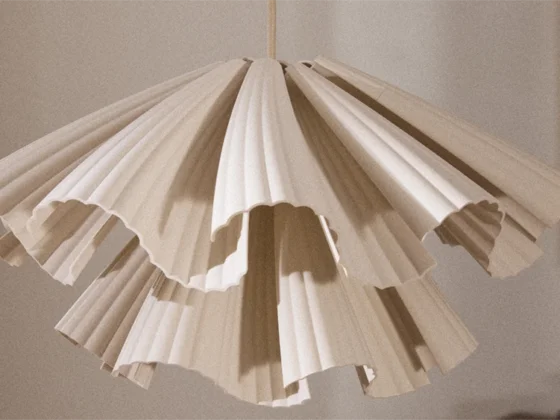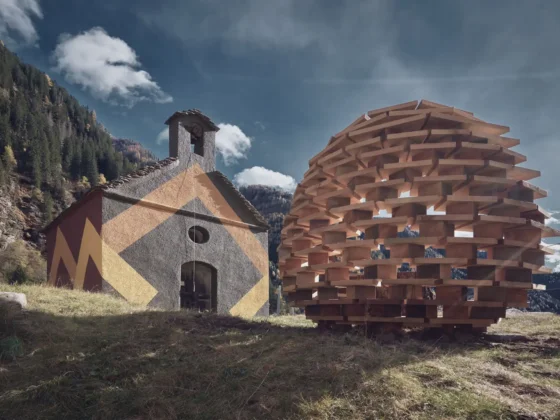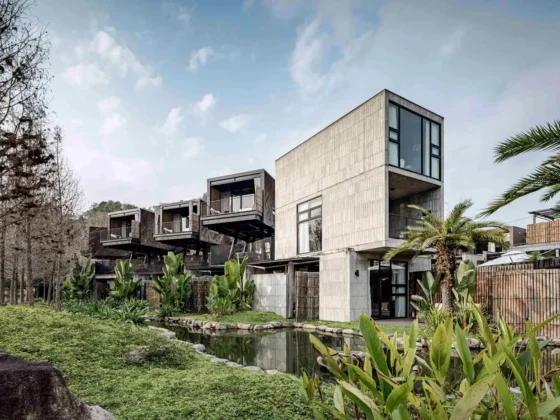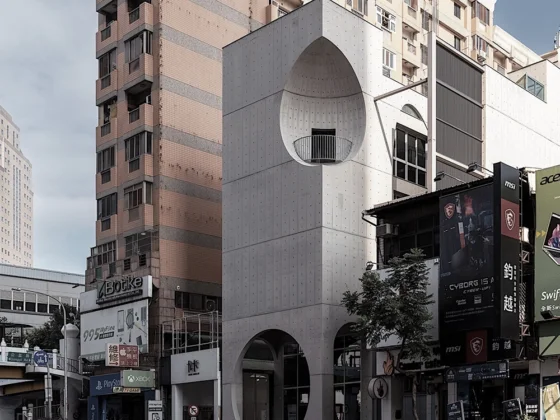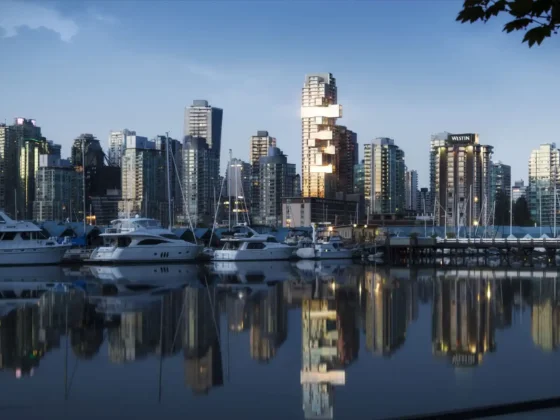Portland, Oregon, USA
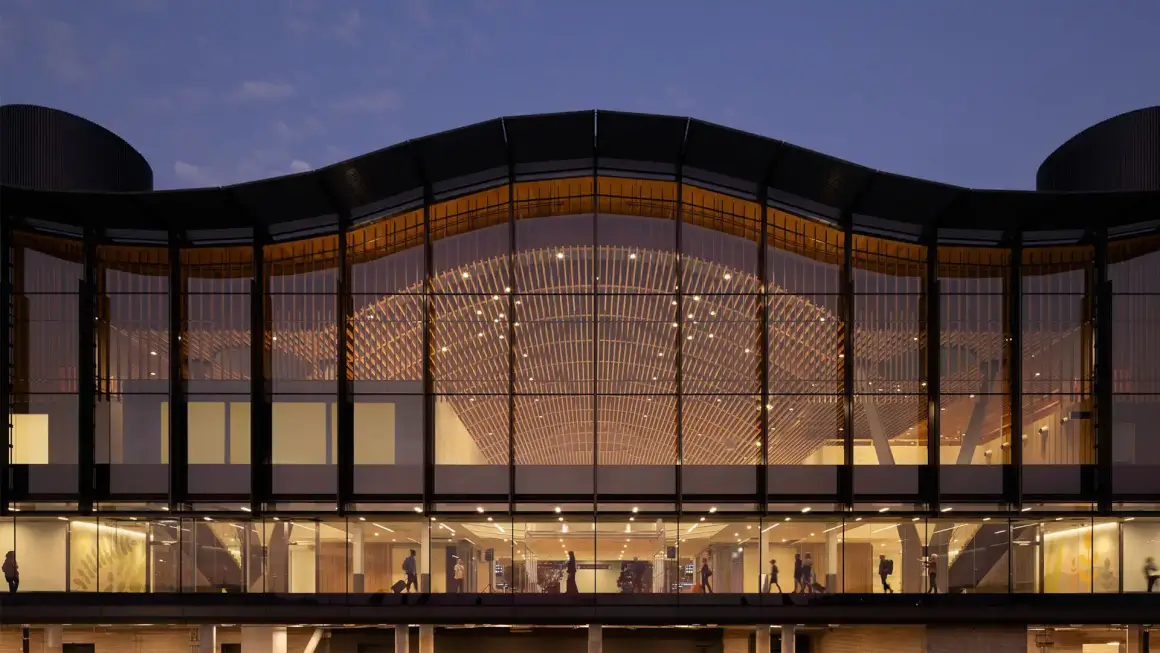
The new main terminal at Portland International Airport (PDX) is designed to evoke the feeling of walking through a forest, reflecting the natural beauty and spirit of Oregon. The PDX NEXT expansion aims to accommodate growing passenger numbers, enhance seismic resilience, reduce carbon emissions, promote economic equity, and create architecture inspired by the Pacific Northwest. A key goal was to keep the terminal operational throughout construction, which was achieved by prefabricating a unique modular roof on-site and installing it overnight without disrupting airport activity.
The terminal’s crowning feature is a 9-acre undulating mass timber hybrid roof, celebrating Oregon’s forest heritage by using locally and sustainably sourced wood from landowners and mills within the Cascadia region. Biophilic design and daylighting principles infuse the space with natural light through 49 skylights and are complemented by robust landscaping, including over 70 mature trees and 5,000 understory plants indoors. The terminal layout is inspired by Portland’s small walkable city blocks, consisting of flexible, human-scaled rooms designed to cultivate a calming atmosphere for passengers and employees.
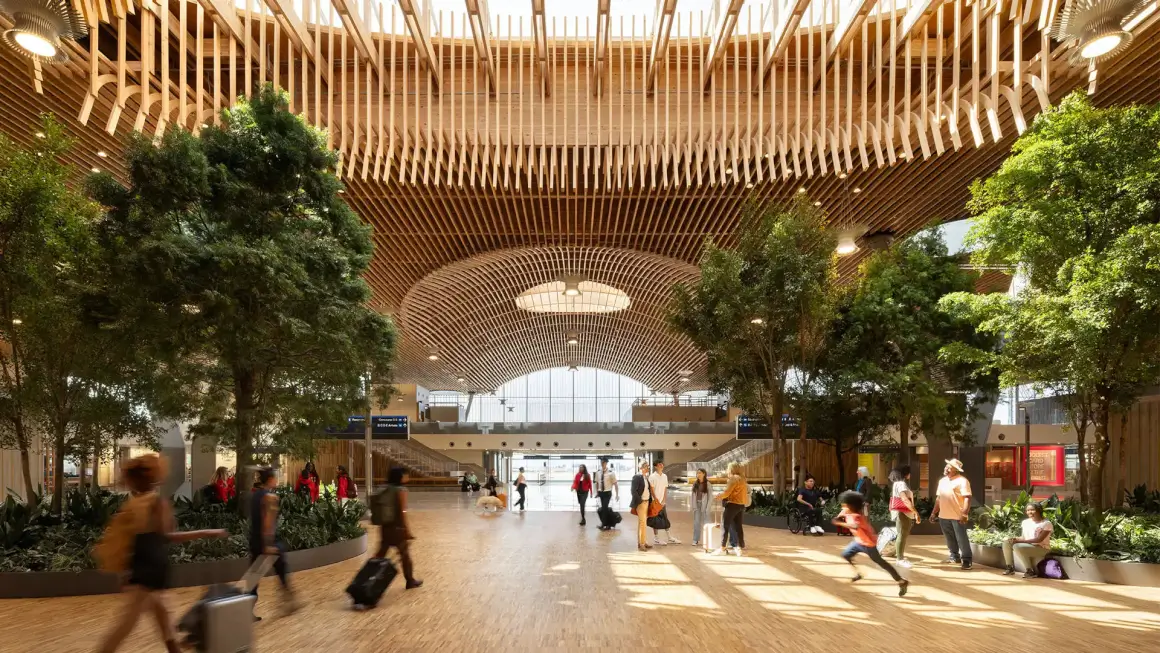
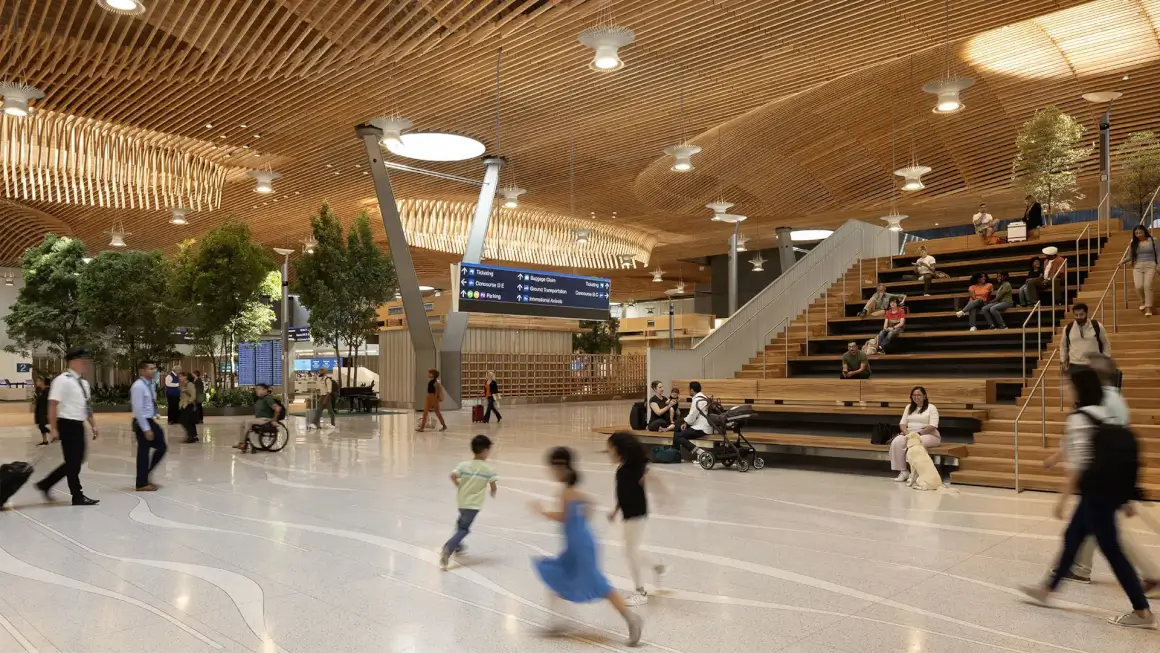
Sustainable forest management is central to the project. PDX partnered with small family forests, community forests, tribal nations, and mills within a 300-mile radius to source approximately one million board feet of timber. The team toured regional forests to understand resilient forestry practices and promote economic inclusivity and environmental stewardship. Wood sourcing followed rigorous criteria, including FSC certification and transparency-based procurement, linking construction materials back to their forest origins and local communities.
Passenger wellbeing was prioritized for the 35 million travelers expected over the next 20 years. The interior landscape and abundant daylight create a welcoming “walk in the forest” experience. The infrastructure was designed to be flexible, supporting evolving technologies and passenger processing innovations. Thirty-five tapered, locally fabricated Y-columns support a large 100’ by 150’ structural grid with unobstructed floorplates that enable column-free security checkpoints and adaptable ticketing islands, future-proofing crucial passenger flow areas.
Located within the seismic Cascadia subduction zone, the terminal is engineered to withstand a magnitude 9 earthquake. The mass timber roof connects to Y-columns via seismic isolators, supporting the exterior curtain walls and providing structural resilience.

The terminal builds on PDX’s legacy as a community-centered airport. The MAX Red Line light rail was upgraded with a new terminal station to improve access. PDX continues to lead the industry with a focus on local brand retail, offering an industry-leading 30% of concessions before security. Public lounges and open gathering spaces provide views of the airfield and invite both travelers and locals to enjoy the terminal as a vibrant civic space, redefining the airport’s role in the community.
Overall, the PDX NEXT terminal expansion embodies a sustainable, adaptable, and locally rooted architectural vision that celebrates Oregon’s natural heritage while preparing the airport for future growth. It balances functionality and passenger experience with environmental stewardship, community connection, and seismic safety to create a unique gateway to the Pacific Northwest.
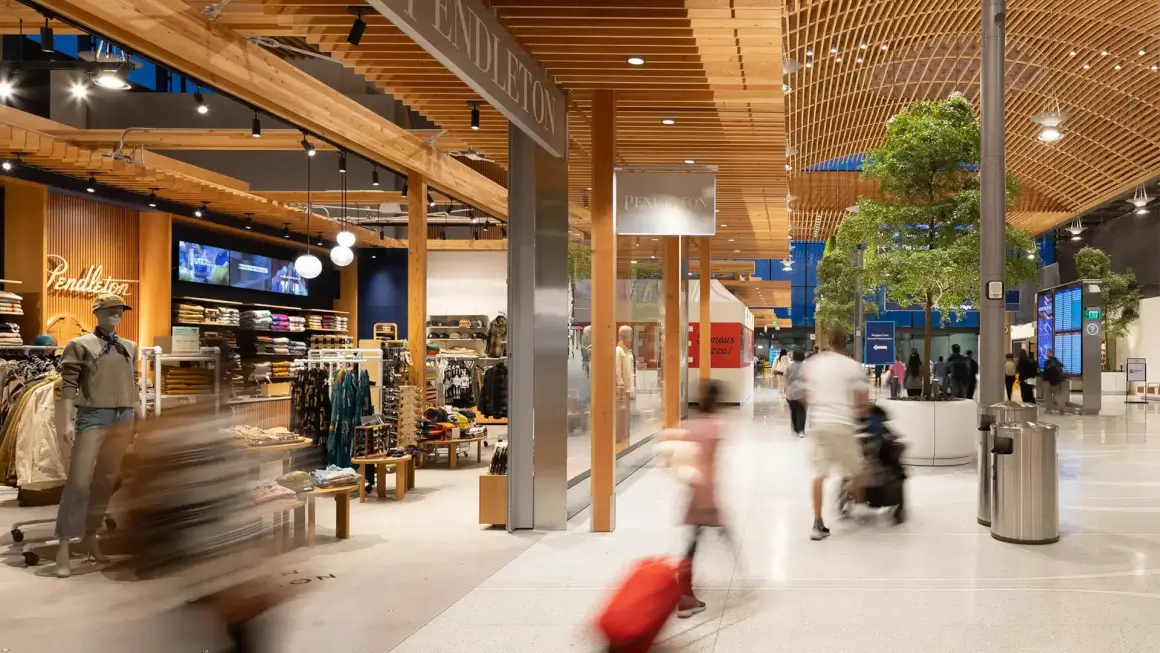

Architects: ZGF Architects
Lead Architects: Sharron van der Meulen and Gene Sandoval
Landscape Architects: PLACE Landscape Architecture
Biophilic Design Consultants: Terrapin Bright Green
General Contractor: Hoffman Skanska Joint Venture
Client: Port of Portland
Photographers: Ema Peter and Dror Baldinger

